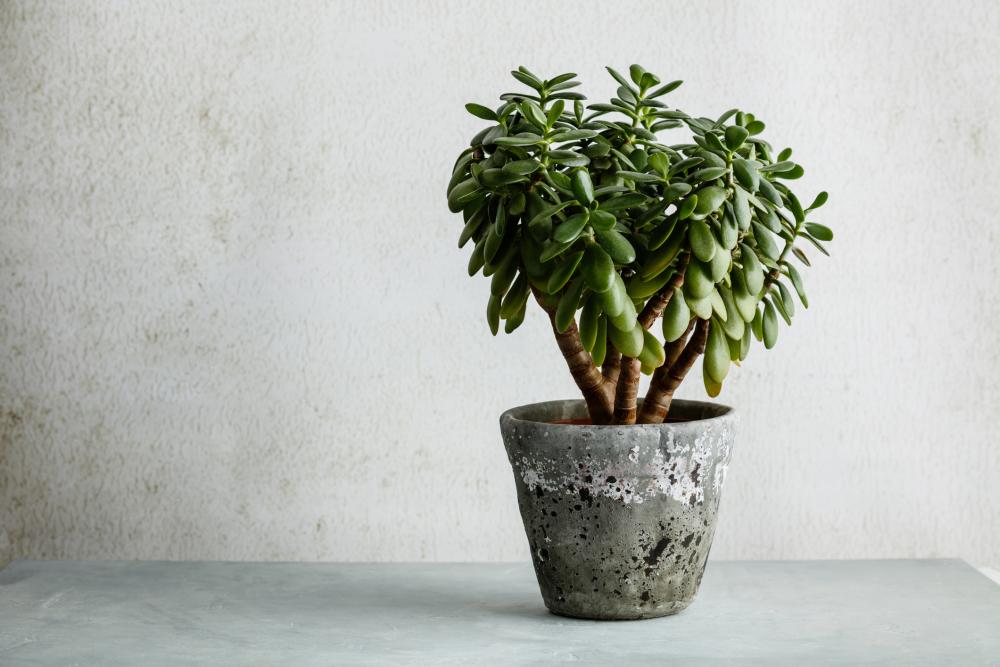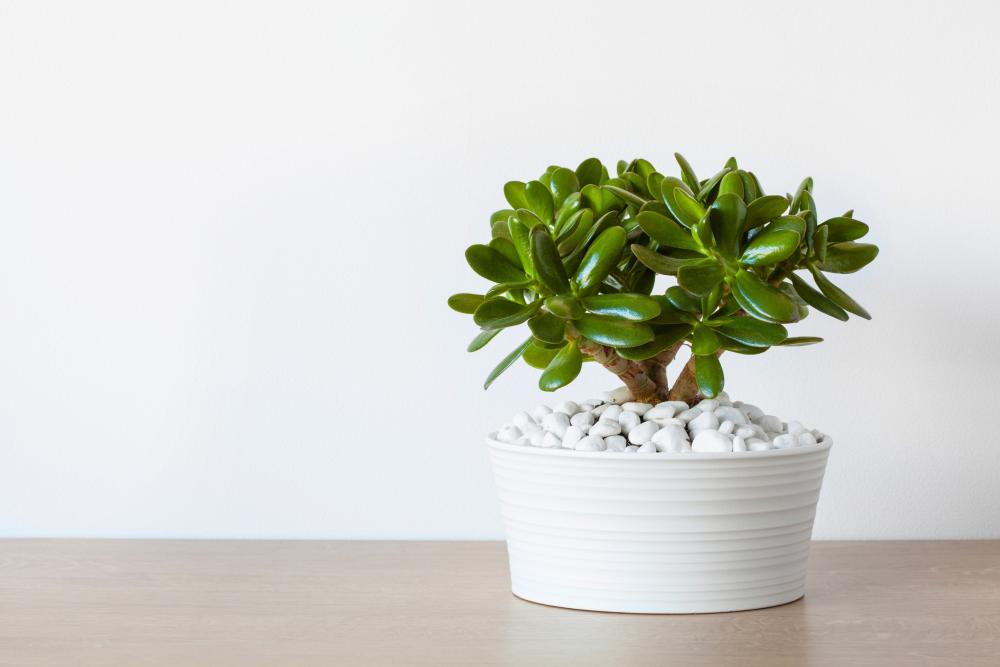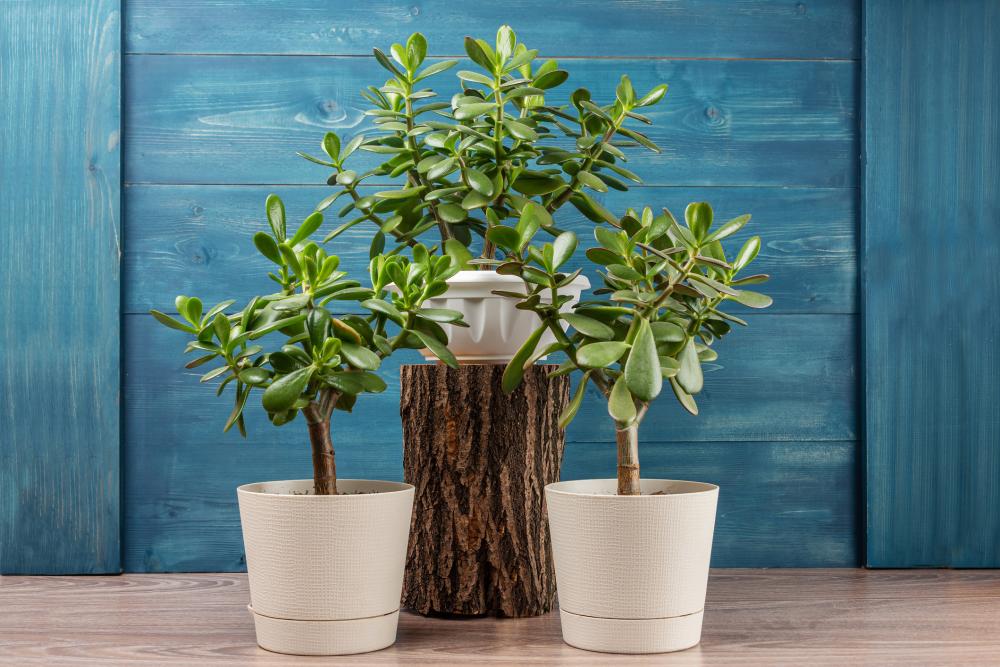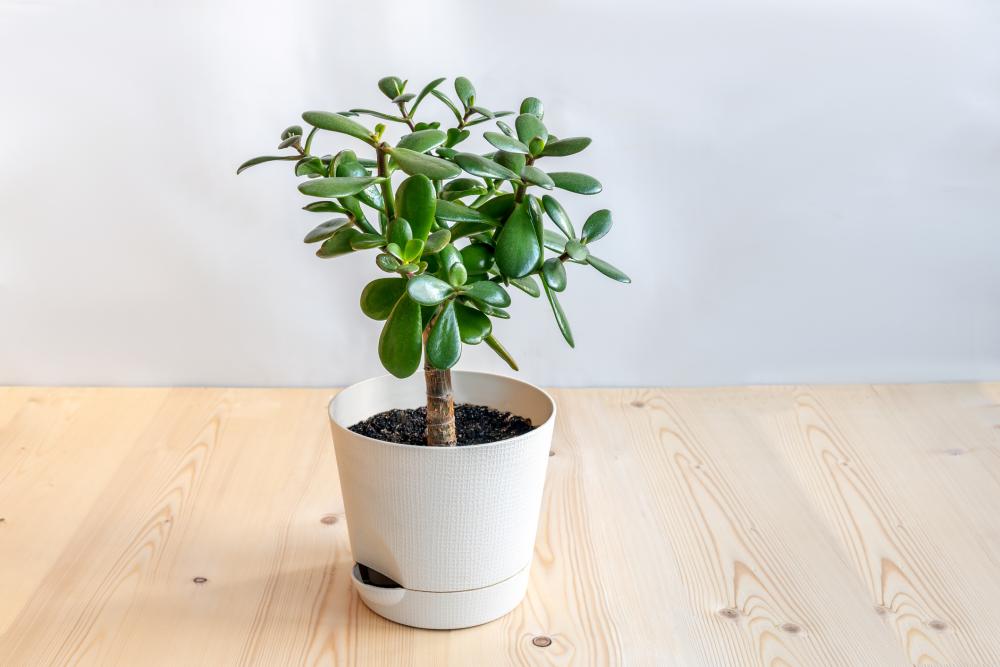6 Jade Plant Growing Problems And The Ideal Solutions For Them
Out of the many jade plant growing problems, six issues really stand out. These have to do with wrinkled leaves, leggy plants, lack of blooms, and different spots of various colors on the leaves. As a houseplant, you can’t help but notice anything wrong with the jade plant as soon as it appears. And this is not something you can just ignore and hope it will go away or get better with time.
If there’s one thing in common about those 6 jade plant growing problems, it’s that they will not improve with time. On the contrary. They will get worse and ruin the aesthetic values of the plant with every passing day. So you’ll need to fix them as soon as you can to get your ornamental plant back.
Jade Plant Looks Wrinkled
Jade care is a complex process that involves many tasks and maintenance routines you have to fulfill on a regular basis. In a way, that’s a good thing. Because it means you’ll notice any changes on the plant as soon as they occur which makes it easy to fix any of the many health problems the houseplant encounters.
Wrinkled leaves are one of those common issues with jade plants. The healthy leaves are meaty and glossy with dark green colors. They’re actually water storage tanks for the plant that keep it going during periods of drought. But when the leaves droop and lose their glossy look, you know something is not right. It could be underwatering or overwatering.
How to Fix It
Paradoxically, the two causes of jade wrinkled leaves are related to water. If you give the plant too much water, the leaves will look unhealthy. And if you forget to water it for a long period of time and the soil goes dry, the leaves will also become wrinkled. This doesn’t have to be confusing since there are easy ways to tell if the wrinkled leaves are caused by overwatering or lack of water.
- Underwatering: One look at the soil in the pot can tell you right away that the plant hasn’t had water for a long time. Just dip your finger in the soil and see how far it will go. Moist soil allows your finger in easily while dry soil is hard. Fixing this problem is easy. Just water the plant and get the soil moist. In the summer, the soil in the pot dries out fast, so you’ll need to water your jade plant between 3 to 4 times a week.
- Overwatering: On the other end of the spectrum, too much water can also make the leaves look wrinkled and exhausted. The leaves would also turn yellow and when you examine the soil, you can tell it’s not just moist, but wet. Cut back on watering and allow the soil to dry out. Reduce water amounts and give the plant just enough to get the soil moist. In the fall and winter, cut back on watering and allow the top three inches of the soil to go dry before watering.
Leggy Jade Plant Care
Some houseplants tend to get leggy. That’s when the stalks lose the lower leaves and the plant looks like it has long legs. That’s a far cry from the lush and bushy plant with full foliage where you can barely see the stems. Unfortunately, jade plants are prone to this problem and after a couple of years in the pot, can get leggy.
There are two reasons why your jade plant has become stretched like that. The first is inadequate pruning. If you allow the houseplant to grow at will without intervention, eventually the stems grow old and the leaves drop. The other reason is insufficient light which forces the stems to reach out seeking light.
How to Fix It
Fixing a leggy jade plant is not simple and takes a long time. Whether it’s lack of pruning or lack of enough light, the answer is always to prune the plant and trim off the old stems to encourage new growth. But if the cause of the problem is inadequate light, then you’ll also need to move the plant to a window sill where it gets about 8 hours of sunlight during the spring and summer.
If you cannot provide that much sun exposure, you can use grow lights. Place the grow light about one foot away from the potted jade and turn them on for about 10 hours a day.
As for pruning the plant, you need to start as early as possible. The young jade will only need some light trimming and pinching off of the top of the main stems. This encourages bushy and robust growth. As for an older plant, cut back by one-third in the fall to trigger the growth of new stems in the next spring.
If the plant doesn’t have enough branches, encourage new branching by making cuts in the old stems above the nodes.
Separating Jade Plants
When your jade plant has reached a certain level of maturity, you can easily divide it into two or more separate plants. And while the process is straightforward enough, there are many ways it can go wrong. Especially if this is the first time you have to care for jade plants. So how can you divide a mature jade plant without damaging the parent plant?
How to Fix It
The first thing to make sure of before dividing the jade plant is that the plant is well hydrated. Water the plant well one day in advance to get the soil moist and make it easy to extract the root system out of the soil. Then when you’re ready to start separating the jade plant, bring along a new container for the new plant, succulent potting mix, and a sterilized blade. Now follow these easy steps.
- Dig the plant out of the soil and try not to damage the root ball in the process.
- Examine the root system and trim off any damaged or rotten roots. Untangle the roots and spread them out with your hand.
- Divide the root ball into two halves. If the plant is more than 3 years old, you can divide it into three separate plants.
- Start cutting along the stems making sure that each stem will have a part of the root ball attached to it.
- Dig a hole in the potting mix that is as deep as the root ball and slightly wider.
- Place the cutting in the hole and spread out the roots to fill up the hole.
- Backfill the hole with the potting mix and firm it to keep the cutting standing upright.
- Water the pot to get it moist.
- Return the parent plant to its own container and firm the soil around the base, then water it.
Jade Plant Won’t Bloom
It’s not uncommon that you hear people complaining about their jade plants not blooming. Lack of flowering is a common problem with the jade plant because any changes to the light conditions around it can cause it to go for years without flowering.
Those small clusters of tiny white flowers with pink shades don’t really add much decorative value to the plant as a whole. Still, their absence might raise alarm bells and signal that something is not right about the plant.
However, it’s fairly common for the jade houseplant not to flower. It takes a lot of work to get some blossoms out of the plant. So how would you achieve that?
How to Fix It
The idea behind fooling the jade houseplant into thinking it’s growing in its natural habitat is not new. However, due to the specific conditions of that original habitat of the plant, you’ll need to be a little creative and patient as well.
The first requirement to force the jade plant to bloom is a period of cool temperatures. While the plant doesn’t exactly go into dormancy, the cold temperature forces it to take a break and get some rest. Reduce the temperature in the room below 60 degrees F and keep it down until the flower buds appear.
Cut down on watering to encourage the flowers to bloom and avoid feeding the plant during this period. When the clusters of white flowers finally fade, cut down the stems and water the plant regularly as before.
Black Spots On Jade Plant
I think we can all agree that the foliage of the jade plant is by far the most important part of the plant. Each thick and meaty leaf adds to the overall effect of the ornamental plant. That being said, the last thing you’d want to see is black spots on the jade plant.
The causes of black spots on the leaves vary. You could have a pest infestation, fungal infections, or you might not be giving the plant its due care and maintenance work. So does that mean that fixing this problem is easy? It depends on what caused it in the first place.
How to Fix It
You’ll need to go through more than one of the following solutions and give each one enough time to see if it fixes the problem or not.
- Pests: Of the many pests that attack and prey on the succulent leaves of jade plants, aphids, mealybugs, whiteflies, and spider mites are the ones that cause the most damage. They leave holes in the leaves and sometimes just black spots behind them. Spray the jade plant with neem oil spray to get rid of the bugs.
- Growing Conditions: Overwatering is the number one cause behind black spots on the leaves. Make sure the plant is growing in sandy soil with good drainage to prevent the roots from absorbing too much water too fast. And allow the top one inch of the soil to dry out between irrigations in the summer.
- Anthracnose: This is not the only disease that infects jade plants, but it’s the main culprit behind the black spots on the leaves. Improve air circulation around the plant and between the stems to reduce humidity levels and cut back on watering. You also need to remove the infected leaves and dispose of them safely.
White Spots On Jade Leaves
Much like black spots, white spots on jade leaves are an unwelcome sight. But before you start blaming yourself for the unfortunate way the houseplant looks, you should examine the leaves closely. Most likely you’ll find that the culprit is a fungal infection such as powdery mildew.
If that’s not the case, then you might be using water with high concentrations of minerals to irrigate the plant.
How to Fix It
Powdery mildew is a fungal infection that appears in the form of white fluffy balls on the surface of the leaves. It often spreads in places with poor lighting, high humidity, and low temperatures. So increase the light in the room or bring the pot to the sill of a window facing the west or south. You can use a fan or a dehumidifier to improve air circulation and reduce humidity levels.
The other reason might have to do with the water. When the plant absorbs water with lots of salts and minerals in it, the excess minerals pile up into small balls that appear on the surface of the leaf. Use a wet cloth to remove the excess salt and use filtered water to irrigate the plant.



